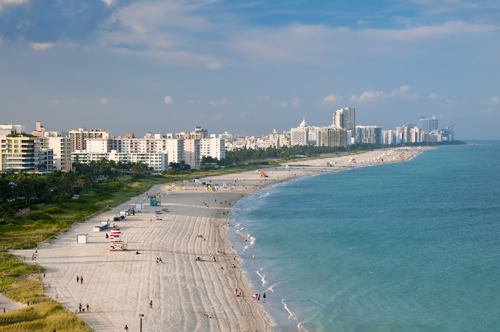New Definition for ŌĆ£Waters of the United StatesŌĆØ What Developers Need to Know

Land developers seeking to build anywhere near coastal waters, lakes, ponds, streams, waterways or wetlands, be aware that U.S. Army Corps of Engineers (ŌĆ£ACOEŌĆØ) and the United States Environmental Protection Agency (ŌĆ£EPAŌĆØ) are proposing a rule to change the definition of ŌĆ£waters of the United StatesŌĆØ that will effectively expand ACOE jurisdiction to require dredge and fill permits. Since the individual 404 permitting process is often long, drawn out and costly, the proposed change has the potential to impact the profitability of projects if the proposed rule is adopted.
According to the public notice issued in connection with the proposed rule:
The proposed rule was developed to enhance protection for the nationŌĆÖs public health and aquatic resources, and increase Clean Water Act program predictability and consistency by increasing clarity as to the scope of ŌĆśwaters of the United StatesŌĆÖ protected under the Act.
Despite this stated intent, the proposed rule will not necessarily provide predictability and consistency for developers and will definitely expand ACOE permitting jurisdiction.
Jurisdictional Waters of the United States Defined
Waters in the categories listed below would be jurisdictional ŌĆ£waters of the United StatesŌĆØ by rule. The proposed rule would apply for all sections of the CWA (i.e. Section 404 and 402) and would include:
- Traditional navigable waters
- Interstate waters, including interstate wetlands
- The territorial seas
- Impoundments of traditional navigable waters, and tributaries of such waters, including adjacent wetlands
Dredge and Fill Permit now Required
Under the proposed rule, landowners and developers whose projects impact any of these ŌĆ£waters of the United StatesŌĆØ would be required to obtain an ACOE dredge and fill permit to impact the waterbody. According to the public notice:
The agencies emphasize that the categorical finding of jurisdiction for tributaries and adjacent waters was not based on the mere connection of a water body to downstream waters, but rather a determination that the nexus, alone or in combination with similarly situated waters in the region, is significant based on data, science, the CWA, and case law.
The case law in question includes two U.S. Supreme Court cases: U.S. v. Riverside Bayview, Solid Waste Agency of Northern Cook County v. U.S. Army Corps of Engineers and Rapanos v. United States both of which limited ACOE jurisdiction over waters the Court found not to be ŌĆ£waters of the United States.ŌĆØ
U.S. Army Corps of Engineers Scope Broadened
Despite EPAŌĆÖs assertion to the contrary on its webpage devoted to this proposed rule, the new proposed definition broadens the scope of ACOE jurisdiction because under current rules and case law, individualized analysis of wetlands and more intermittent and disconnected water bodies is required before ACOE can assert jurisdiction.┬Ā Additionally, the inclusion of tributaries (broadly defined) that connect to navigable waters would arguably allow ACOE to assert jurisdiction over storm water conveyance ditches and pipes that outfall to the Atlantic or Gulf of Mexico in Florida, and any wetlands that have developed adjacent to those ditches and pipes. ┬ĀIn the west, intermittent streams could now be subject to jurisdiction as well (even when there is no water in them).
ŌĆ£Other WatersŌĆØ Also Effected
The proposed rule also contains a catch-all definition for ŌĆ£other watersŌĆØ that might be ŌĆ£waters of the United StatesŌĆØ if, either alone or in combination with similarly situated ŌĆ£other watersŌĆØ in the region, they have a ŌĆ£significant nexusŌĆØ to a traditional navigable water, interstate water, or the territorial seas. While the proposed rule offers a definition of significant nexus and purports to explain how similarly situated ŌĆ£other watersŌĆØ in the region should be identified, the promised clarity is missing, and the regionality of the required analysis is daunting.
Use of ŌĆ£absolute standards such as flow rates, surface acres, or minimum number of functionsŌĆØ is expressly disavowed. Rather, the case-by-case method for determining the significance of ŌĆ£other watersŌĆØ will examine whether such waters have effects that are ŌĆ£more than speculative or insubstantial.ŌĆØ 79 Fed. Reg. at 22211. ┬ĀLast time I checked there was no ASTM standard or tool for definitively measuring ŌĆ£more than speculative or insubstantial,ŌĆØ (even if that is what the U.S. Supreme Court said.) The result will be delay, confusion and added costs; particularly because ACOE is shrinking staff as a result of budget cuts.
Under the proposal, ŌĆ£waters of the United StatesŌĆØ will not include waste treatment systems designed consistent with the requirements of the CWA, prior converted cropland, water transfers, certain farm conservation activities and certain manmade ditches. These exclusions are consistent with long standing ACOE practice.
You can Weigh In
On October 6, 2014 the U.S. Army Corps of Engineers (ŌĆ£ACOEŌĆØ) and the United States Environmental Protection Agency extended the public comment period to November 14, 2014. The additional comment period has been provided to permit the national Scientific Advisory Board to complete its review, but the public is also allowed to submit comments regarding the proposal during this time.┬Ā Anyone who desires to submit comments can do so by one of the following methods, referencing Docket ID No. EPA-HQ-OW-2011-0880:
1. ┬Ā ┬Ā┬ĀFederal e-Rulemaking Portal┬Ā(Follow the instructions for submitting Comments).
2. ┬Ā ┬Ā Email: [email protected]┬Ā(Include EPA-HQ-OW-2011-0880 in the subject line of the message).
3. ┬Ā ┬Ā Mail: Send the original and three copies of comments to:
Water Docket, Environmental Protection Agency, Mail Code 2822T,
Attention: Docket ID No. EPA-HQ-OW-2011-0880
1200 Pennsylvania Avenue NW
Washington, DC 20460
4. ┬Ā ┬Ā Hand Delivery/Courier: Deliver comments to:
EPA Docket Center, EPA West, Room 3334
Attention: Docket ID No. EPA -HQ-OW-2011-0880
1301 Constitution Avenue NW
Washington, DC 20460
Deliveries are accepted only during the DocketŌĆÖs normal hours of operation, which are 8:30 a.m. to 4:30 p.m., Monday through Friday, excluding legal holidays. Special arrangements should be made for deliveries of boxed information. The telephone number for the Water Docket is 202-566-2426.
